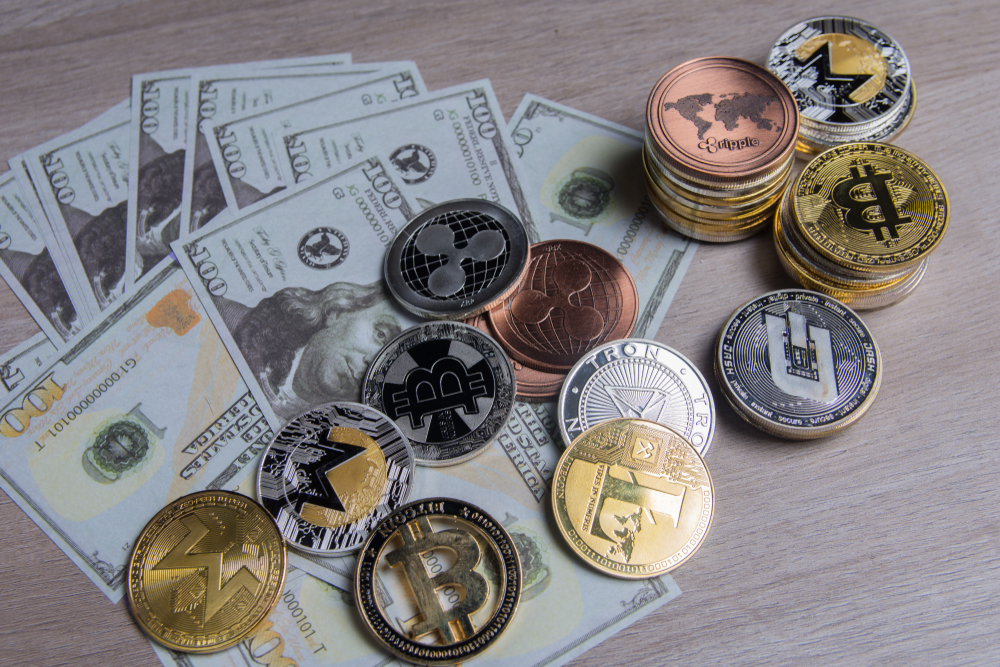Why Stablecoins May Not Be the Solution to Crypto Volatility
Cryptocurrencies have emerged as a popular form of investment and payment over the last few years. However, their high volatility has been a major concern for investors and traders. To address this issue, stablecoins were introduced as a potential solution to provide price stability and lower volatility in the crypto market. In this article, we will examine why stablecoins may not be the ultimate solution to crypto volatility. Make a note that the market is highly volatile and one must take into consideration all the necessary measures to safeguard their investments.
What are Stablecoins?
Stablecoins are digital currencies designed to maintain a stable value by being pegged to an underlying asset, such as the US dollar or gold. This helps to reduce volatility in the crypto market and provides a more reliable form of payment and investment using trading platforms such as Big Money Rush. There are different types of stablecoins, including centralized and decentralized stablecoins, and algorithmic and commodity-backed stablecoins. Let’s get to the benefits of these coins now.
Benefits of Stablecoins:
Stablecoins offer several benefits to investors and traders, including price stability, lower volatility, transparency, and security. Price stability is one of the key advantages of stablecoins. Since they are pegged to an underlying asset, their value remains relatively stable, making them a more reliable store of value and medium of exchange. Stablecoins also provide lower volatility compared to other cryptocurrencies, reducing the risk of price fluctuations and market crashes. They are transparent, as their value is usually backed by an underlying asset or algorithm, which can be easily audited. Additionally, stablecoins provide a high level of security as they use blockchain technology to secure transactions and prevent fraud.
Why Stablecoins May Not Be the Solution to Crypto Volatility:
Although stablecoins offer several benefits, they may not be the ultimate solution to crypto volatility. Stablecoin value is pegged to another asset, which means that its stability depends on the stability of the underlying asset. For example, if a stablecoin is pegged to the US dollar, any fluctuations in the value of the dollar will affect the value of the stablecoin. Therefore, stablecoins cannot provide complete immunity to market fluctuations.
Another issue with stablecoins is the risk of centralization. Centralized stablecoins are issued and controlled by a single entity, which means that the stability of the coin depends on the issuer’s credibility and ability to maintain the peg. This creates a risk of censorship, as the issuer can freeze or seize funds at any time, compromising the user’s control over their own money.
Furthermore, stablecoins have limited adoption in the market. Although their popularity is increasing, stablecoins still represent a small percentage of the overall crypto market. This limits their ability to provide a stable alternative to other cryptocurrencies and address the issue of volatility.
Lastly, stablecoins depend on traditional financial systems to maintain their peg. This creates a potential point of failure, as stablecoins are subject to the same risks as traditional financial systems, such as inflation, government intervention, and market crashes. Are there any alternatives? Let’s discuss the alternatives for addressing volatility.
Alternatives to Stablecoins for Addressing Crypto Volatility:
Several alternatives to stablecoins exist that can address the issue of crypto volatility. Decentralized exchanges, DeFi protocols, decentralized stablecoins, and crypto derivatives are some of the potential solutions. Decentralized exchanges allow for peer-to-peer trading without the need for intermediaries. This reduces the risk of market manipulation and provides greater security and privacy for users.
DeFi protocols provide a decentralized financial infrastructure that can be used to create stablecoins and other financial instruments. This allows for greater flexibility and innovation in the financial system, reducing the dependence on traditional financial systems.
Decentralized stablecoins are designed to maintain their stability through a decentralized network of users, eliminating the risk of centralization and providing greater control over user funds.
Crypto derivatives, such as futures and options, allow investors to hedge against price fluctuations and reduce their exposure to market volatility.
Conclusion
In conclusion, while stablecoins provide several benefits, including price stability and lower volatility, they may not be the ultimate solution to crypto volatility. The more you are informed about the basics and the concepts of the market, you are on the safer side and can prevent risk and financial losses.

